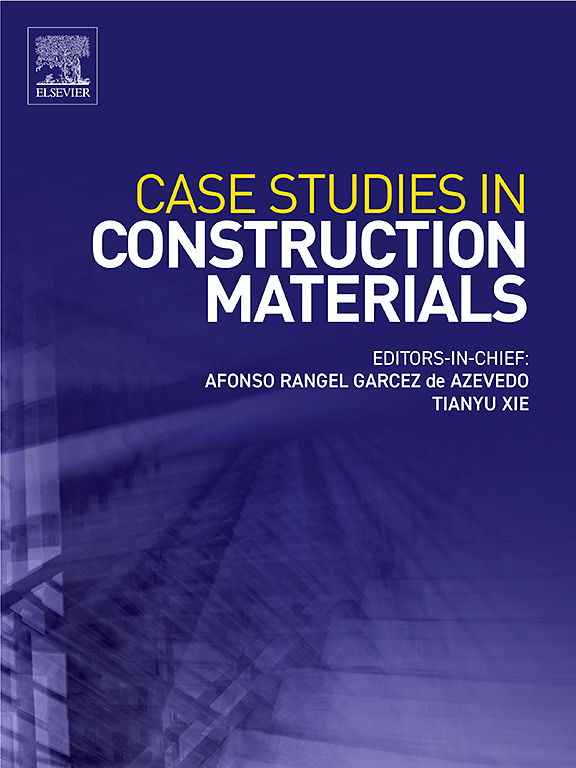Effect of temperature and humidity environment on the microstructure and physicochemical properties of SBS modified asphalt
IF 6.5
2区 工程技术
Q1 CONSTRUCTION & BUILDING TECHNOLOGY
引用次数: 0
Abstract
Asphalt pavements undergo aging process when exposed to various environmental factors, which affects their service life. Numerous engineering cases have demonstrated that water vapor is a significant cause of aging damage in asphalt pavement during its service period. This study aimed to assess the impact of temperature and humidity on the physicochemical characteristics of asphalt binders. First, asphalt samples were subjected to damp-heat aging conditions using a custom-made environment chamber. The specimens were then investigated through Fourier transform infrared spectroscopy (FTIR), gel permeation chromatography (GPC), and nuclear magnetic resonance hydrogen spectroscopy (NMR). The results suggest that rising temperature accelerates the movement of particles in the system, leading to the generation of more carbonyl and sulfoxide functional groups. Furthermore, higher humidity encourages the formation of hydrogen bonds between the polar groups in asphalt and water molecules, resulting in the generation of more oxygen-containing functional groups. In comparison to variations in humidity, the aging of SBS modified asphalt binder exhibits a higher sensitivity to temperature. Under identical aging conditions, the rise in both carbonyl index and sulfoxide indices is more pronounced in base asphalt binder compared to SBS modified asphalt binder. With the increase in aging duration, temperature, and humidity, the macromolecular content increases, while the content of small and medium-sized molecules decreases. Additionally, the weight-average molecular weight of asphalt shows greater sensitivity to these changes compared to the number-average molecular weight. Following damp-heat aging, asphalt undergoes hydrogen substitution on the aromatic rings, which increases hydrogen content on aliphatic side chains and enhances intermolecular forces. As humidity increases, the large molecular proportion (LMS%) changes in SBS modified asphalt binder are more pronounced than in base asphalt binder. Additionally, the changes in the sulfoxide index are greater in SBS modified asphalt binder than in base asphalt binder. This may suggest that SBS polymers degrade more quickly due to humidity than base asphalt.
温湿度环境对SBS改性沥青微观结构和理化性能的影响
沥青路面在各种环境因素的作用下会发生老化过程,影响其使用寿命。大量工程实例表明,沥青路面在使用期间,水汽是造成老化损伤的重要原因。本研究旨在评估温度和湿度对沥青粘结剂理化特性的影响。首先,在定制的环境室中对沥青样品进行湿热老化试验。然后通过傅里叶变换红外光谱(FTIR)、凝胶渗透色谱(GPC)和核磁共振氢谱(NMR)对样品进行了研究。结果表明,温度升高加速了系统中颗粒的运动,导致产生更多的羰基和亚砜官能团。此外,较高的湿度促使沥青和水分子中极性基团之间形成氢键,从而产生更多含氧官能团。与湿度变化相比,SBS改性沥青粘结剂的老化表现出更高的温度敏感性。在相同老化条件下,与SBS改性沥青粘结剂相比,基沥青粘结剂羰基指数和亚砜指数的上升更为明显。随着老化时间、温度和湿度的增加,大分子含量增加,中小分子含量减少。此外,与数平均分子量相比,沥青的重量平均分子量对这些变化表现出更大的敏感性。湿热老化后,沥青芳香环上发生氢取代,增加了脂肪侧链上的氢含量,增强了分子间的作用力。随着湿度的增加,SBS改性沥青粘结剂的大分子比(LMS%)的变化比普通沥青粘结剂更明显。此外,SBS改性沥青粘结剂的亚砜指数变化比普通沥青粘结剂大。这可能表明SBS聚合物由于湿度比基础沥青更快地降解。
本文章由计算机程序翻译,如有差异,请以英文原文为准。
求助全文
约1分钟内获得全文
求助全文
来源期刊

Case Studies in Construction Materials
Multiple-
CiteScore
7.60
自引率
19.40%
发文量
842
审稿时长
63 days
期刊介绍:
Case Studies in Construction Materials provides a forum for the rapid publication of short, structured Case Studies on construction materials. In addition, the journal also publishes related Short Communications, Full length research article and Comprehensive review papers (by invitation).
The journal will provide an essential compendium of case studies for practicing engineers, designers, researchers and other practitioners who are interested in all aspects construction materials. The journal will publish new and novel case studies, but will also provide a forum for the publication of high quality descriptions of classic construction material problems and solutions.
 求助内容:
求助内容: 应助结果提醒方式:
应助结果提醒方式:


